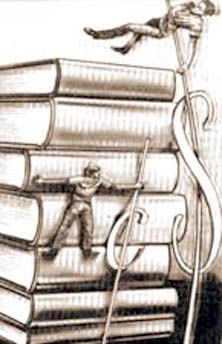
Trump has proposed a new $20 billion federal program to encourage school choice nationwide. Details are thin - and Trump's team has not said where the federal government would find the money - but vouchers and charter schools are likely to be a priority for the incoming administration, and perhaps not just for children from poor families, but also those with means. Vouchers allow parents to receive public funding to help them move their children out of their school districts and into the private or parochial schools they prefer.
"Donald Trump and I both believe that every parent in America should be able to choose where their children go to school, regardless of their income and regardless of their area code, and public, private and parochial and faith-based schools on the list," Pence said in September, according to the Salt Lake Tribune.
The Obama administration and many Democrats have been staunch supporters of charter schools, and equally staunch opponents of vouchers, viewing them as a drain on public schools that serve the majority of the nation's children. Advocates for vouchers now see an opening for change.
"It's an extraordinary opportunity for far-reaching education reform," said Jeanne Allen, founder and CEO of the Center for Education Reform, a pro-charter, pro-voucher advocacy group.
The push toward school choice is deeply unpopular with advocates for traditional public schools, including teachers unions.
"The general population of the United States of America needs to be watchful, and needs to be making sure there's accountability there for where this money goes," said Teresa Meredith, president of the Indiana State Teachers Association.
Unions mounted a legal challenge against Indiana's voucher program, which Gov. Mitch Daniels, R, signed into existence in 2011. But courts put an end to that challenge shortly after Pence took office in 2013, and he led the charge to expand the program, getting rid of a cap on the number of recipients and loosening eligibility requirements for students.
Now nearly 60 percent of Indiana children - including those from low-income families and from the middle class - are eligible for the vouchers, which average about $4,000 per year.
The number of students receiving vouchers to attend private and religious schools has ballooned from about 4,000 in 2012 to more than 30,000 in 2016, making Indiana's the largest single voucher program in the nation. The cost of the program grew from $15 million to $131 million during that same time period.
More than half of recipients in 2016 - 52 percent - never attended public schools before receiving a voucher, according to state data. Just more than 60 percent are white, 18 percent are Latino and 13 percent are black.
There are also more than twice as many charter schools in Indiana than there were five years ago, according to Chalkbeat, an education news website. Their growth has been aided by Pence's successful efforts to increase their funding and give them access to low-interest loans for facilities.
Ohio has a state program that supplies taxpayer-funded vouchers to more than 18,000 students. A recent study of that program, released in July by the conservative Thomas B. Fordham Institute, found that students who used the vouchers to attend private schools performed worse on standardized tests than similar students who stayed in public schools.
A separate study of Indiana's program found that students who used vouchers to transfer from public to private schools saw a decline in math achievement and no change in language arts.
Other research, however, suggests that black students who receive vouchers are significantly more likely to enroll in college, and that low-income minority students who receive vouchers are more likely to graduate from college.
Proponents of voucher programs push back against the notion that test scores are the right way to measure vouchers' success. Decisions about which schools a child may attend "should be made based on a child's individual learning needs, and that's what the school voucher program does," voucher advocate Tosha Salyers wrote in a 2015 blog post for EdChoice, an Indianapolis-based organization that promotes school choice nationwide.
"It empowers parents - who are their children's best advocates - to afford the schools and services that fit their needs," Salyers wrote. "That's something numbers in a spreadsheet can't explain."


 Contact The Editor
Contact The Editor
 Articles By This Author
Articles By This Author